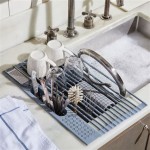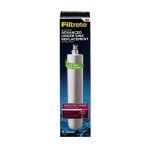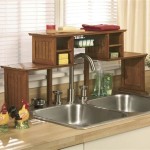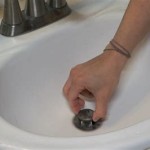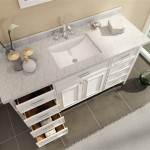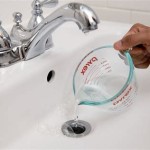12 Inch Bathroom Vanity With Sink: A Comprehensive Guide
The constraints of limited bathroom space often necessitate innovative design solutions. Among these, the 12-inch bathroom vanity with sink emerges as a particularly practical and space-saving option. This article provides a detailed exploration of this type of vanity, covering its benefits, design considerations, material choices, and installation aspects.
Bathrooms, especially in older homes, apartments, or powder rooms, are frequently subject to spatial restrictions. Standard-sized vanities can overwhelm such areas, hindering movement and diminishing the overall aesthetic. A 12-inch vanity circumvents this issue by offering a compact footprint without sacrificing functionality. It provides a designated space for a sink and essential toiletries, contributing to a more organized and visually appealing environment.
Key Point 1: Advantages of a 12-Inch Vanity
The implementation of a 12-inch bathroom vanity with sink provides several significant advantages, primarily geared towards optimizing limited spaces. These advantages extend beyond mere space-saving and contribute to the overall value and functionality of the bathroom.
Space Optimization: The most obvious benefit is the efficient use of space. A 12-inch vanity occupies a minimal area, making it ideal for small bathrooms, powder rooms, or tight corners. This allows for easier movement and reduces the feeling of being cramped.
Cost-Effectiveness: Generally, smaller vanities are more affordable than their larger counterparts. This can be a crucial factor for budget-conscious homeowners or those undertaking large-scale renovation projects where cost savings across multiple units can accumulate significantly.
Aesthetic Appeal: While small, these vanities can still make a significant aesthetic impact. With careful selection of design and materials, a 12-inch vanity can complement the overall bathroom style, contributing to a cohesive and visually pleasing design.
Ease of Installation: Due to their size and weight, 12-inch vanities are typically easier to install compared to larger, heavier units. This can translate to reduced labor costs if professional installation is required, or a simpler DIY project for those with experience.
Functional Storage: While the storage capacity is limited by the size, a well-designed 12-inch vanity can still offer sufficient space for essential toiletries, such as soap, toothpaste, and small personal care items. Some models incorporate shelves, drawers, or open storage to maximize utility.
Accessibility: For individuals with mobility limitations, a smaller vanity can be more accessible. The reduced depth allows for easier reach to the sink and stored items, promoting independence and convenience.
Key Point 2: Design and Material Considerations
Selecting the appropriate design and materials is crucial for both the aesthetic integration and the longevity of a 12-inch bathroom vanity with sink. The choices available encompass a wide range of styles and materials, each offering distinct properties and visual characteristics.
Style Selection: The design should complement the existing bathroom decor. Options range from modern and minimalist to traditional and rustic. A floating vanity can create a sense of spaciousness, while a cabinet-style vanity offers enclosed storage. The style of the sink is also a significant factor. A vessel sink, for example, sits on top of the vanity, adding height and visual interest, while an undermount sink provides a seamless and clean look.
Material Choices for the Vanity Cabinet: The cabinet material should be durable and moisture-resistant, given the humid bathroom environment. Common choices include:
Solid Wood: Offers natural beauty and durability but requires proper sealing to prevent water damage. More expensive than other options.
Plywood: A more stable and moisture-resistant alternative to solid wood. Often used with a veneer to achieve the desired aesthetic.
MDF (Medium-Density Fiberboard): Affordable and easy to work with, but less water-resistant than solid wood or plywood. Requires a waterproof finish or sealant.
PVC (Polyvinyl Chloride): Highly water-resistant and durable, making it a suitable option for bathrooms. Can mimic the look of wood but lacks the natural texture.
Sink Material Selection: The sink material should be chosen based on durability, aesthetics, and ease of cleaning. Common options include:
Ceramic/Porcelain: A classic and durable choice that is easy to clean and resistant to stains. Available in a variety of shapes and sizes.
Glass: Offers a modern and elegant look but can be more prone to scratches and chips. Requires careful cleaning to maintain its clarity.
Stone (Granite, Marble): Adds a luxurious touch but requires regular sealing to prevent staining. Can be more expensive than other options.
Stainless Steel: Durable and resistant to rust, but can be susceptible to water spots and scratches. Offers a modern, industrial aesthetic.
Hardware Selection: The hardware, such as knobs and handles, should complement the overall design and provide a functional grip. Consider materials like stainless steel, brass, or brushed nickel for durability and corrosion resistance.
Color Palette: The color of the vanity should coordinate with the existing bathroom colors. Light colors can create a sense of spaciousness, while dark colors can add depth and drama. Consider the color of the walls, flooring, and other fixtures when making your selection.
Key Point 3: Installation and Plumbing Considerations
Proper installation is essential to ensure the functionality and longevity of a 12-inch bathroom vanity with sink. Plumbing connections require careful attention to prevent leaks and ensure proper drainage. Prior planning and adherence to building codes are crucial.
Pre-Installation Planning: Before starting the installation, carefully measure the available space and ensure that the vanity will fit comfortably. Check the location of existing plumbing lines and make any necessary adjustments. It is crucial to ensure that the new vanity will align with the existing water supply and drain lines. This may involve adjusting the plumbing layout, which should be done by a qualified plumber.
Water Supply and Drain Lines: The water supply lines (hot and cold) must be connected to the sink faucet. Use flexible supply lines for easier connection and to prevent stress on the pipes. Securely tighten all connections to prevent leaks. The drain line must be connected to the sink drain and the main drain pipe. Use plumber’s tape or pipe sealant on threaded connections to ensure a watertight seal. Consider the height of the drain connection to ensure proper drainage and prevent clogs.
Securing the Vanity: Depending on the type of vanity (freestanding or wall-mounted), it will need to be securely attached to the wall or floor. For wall-mounted vanities, use appropriate mounting hardware designed for the wall type (e.g., drywall anchors for drywall, lag screws for studs). Ensure that the vanity is level before tightening the mounting hardware. For freestanding vanities, ensure they are stable and level on the floor. Shim if necessary to prevent wobbling.
Faucet Installation: The faucet should be installed according to the manufacturer's instructions. Typically, this involves connecting the water supply lines to the faucet and securing the faucet to the sink. Ensure that the faucet is properly aligned and that all connections are watertight.
Sealing and Caulking: Apply a bead of caulk around the edges of the sink where it meets the vanity countertop to prevent water from seeping underneath. Seal any gaps between the vanity and the wall with caulk to prevent moisture buildup and mold growth. Use a mildew-resistant caulk for best results.
Testing and Inspection: After completing the installation, thoroughly test the water supply and drain lines for leaks. Turn on the faucet and check for any leaks around the connections. Run water down the drain to ensure proper drainage. Inspect the entire installation for any weaknesses or potential problems. If any leaks are detected, immediately tighten the connections or reapply sealant as needed.
Building Code Compliance: Ensure that the installation complies with local building codes and regulations. This may involve obtaining permits for plumbing work or having the installation inspected by a building inspector. Adherence to building codes ensures the safety and legality of the installation.
Professional Installation: If unfamiliar or uncomfortable with plumbing or carpentry work, consider hiring a professional plumber or contractor to install the vanity. A professional installation can ensure that the job is done correctly and safely, preventing costly mistakes and potential damage.
In conclusion, a 12-inch bathroom vanity with sink represents a viable solution for optimizing space in smaller bathrooms. Through careful consideration of design, materials, and installation procedures, it is possible to create a functional and aesthetically pleasing addition to the bathroom environment.

12 Inch Deep Bathroom Vanity Floor Stand Cabinet Double Sink Solid Wood Overlay Mirror Medicine Made In China Com

12 Inch Deep Bathroom Vanity Floor Stand Cabinet Double Sink Solid Wood Overlay Mirror Medicine Made In China Com

Home Decorators Collection Arvesen 18 In W X 12 D 34 H Single Sink Bath Vanity White With Ceramic Top 18w The

Bathroom Vanity 12 Inch Depth

6 Space Saving Vanities For Small Bathrooms Unique

Glacier Bay Delridge 12 In Single Sink Pearl Gray Bath Vanity With White Cultured Marble Top Assembled Dr12p2 Pg The Home

12 Inch Deep Bathroom Vanity Floor Stand Cabinet Double Sink Solid Wood Overlay Mirror Medicine Made In China Com

12 Inch Deep Single Solid Wood Italian Bathroom Vanity B 8660 N Lfurniture

Nameeks Sky12 By Nameek S Sky Wall Mounted Bathroom Vanity Glossy White 32 Inch Thebathoutlet

12 Inch Deep Bathroom Vanity With Sink
